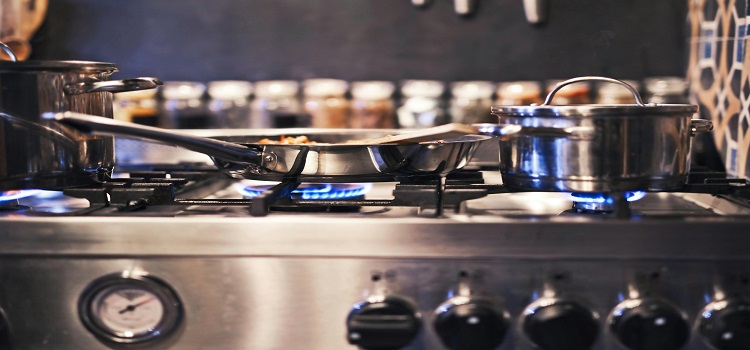As an Amazon Associate I earn from qualifying purchases.
Understanding Gas Stove Schematics: A Comprehensive Guide
Introduction: Gas stove schematics provide valuable insights into the internal components, electrical connections, and operational principles of gas stoves. Understanding these schematics is essential for troubleshooting issues, performing repairs, and maintaining the functionality of your gas stove. In this guide, we’ll explore the significance of gas stove schematics, how they’re used, and answers to common questions to help you navigate and interpret these technical diagrams effectively.

Uses of Gas Stove Schematics: Gas stove schematics serve several important purposes in appliance maintenance and repair, including:
- Troubleshooting: Schematics help identify potential causes of malfunctions or performance issues by highlighting the interactions between different components.
- Repair Guidance: Technicians use schematics to locate specific parts, diagnose problems, and perform repairs or replacements accurately.
- Installation Assistance: Schematics provide guidance for installing new gas stoves or replacing existing components, ensuring proper connections and functionality.
Benefits of Gas Stove Schematics:
- Diagnostic Tool: Schematics facilitate systematic troubleshooting by illustrating the relationship between electrical components, gas lines, and control mechanisms.
- Precision: Detailed schematics allow technicians to pinpoint the source of problems accurately, reducing diagnostic time and improving repair efficiency.
- Safety: Understanding gas stove schematics helps technicians adhere to safety protocols and prevent accidents during maintenance or repair procedures.
- Cost-Effectiveness: Efficient diagnosis and repair based on schematics can minimize downtime and reduce repair costs by addressing issues promptly and accurately.
How to Interpret Gas Stove Schematics:
- Component Identification: Familiarize yourself with the symbols and labels used in gas stove schematics to identify key components such as burners, igniters, valves, switches, and sensors.
- Circuit Analysis: Trace the flow of electrical currents and signals through the schematic to understand how components interact and influence stove operation.
- Troubleshooting Logic: Use the schematic to isolate potential problem areas, test components for continuity or voltage, and verify proper connections to diagnose issues effectively.
- Safety Precautions: Exercise caution when working with gas stove schematics, ensuring proper grounding, insulation, and adherence to safety guidelines to prevent electrical shocks or gas leaks.
FAQs (Frequently Asked Questions):
- What is a gas stove schematic, and why is it important?
- A gas stove schematic is a technical diagram that illustrates the electrical and mechanical components of a gas stove, their connections, and their functions. It is essential for troubleshooting, repair, and maintenance tasks.
- Where can I find a schematic for my gas stove?
- Schematics may be available in the user manual provided by the manufacturer, service documentation from authorized technicians, or online resources for appliance repair.
- How do I use a gas stove schematic to diagnose problems?
- Start by identifying the problem symptoms, then refer to the schematic to trace the relevant circuits, components, and connections associated with those symptoms. Test components for continuity, voltage, or proper operation to pinpoint the cause of the problem.
- What are common issues that can be diagnosed using a gas stove schematic?
- Common issues include igniter failure, gas valve malfunctions, control board errors, sensor defects, and wiring problems. The schematic helps identify the affected components and troubleshoot them systematically.
- Can I repair my gas stove using the schematic, or should I hire a technician?
- DIY repairs based on gas stove schematics are possible for individuals with technical skills and knowledge of electrical systems. However, complex issues or safety concerns may require professional assistance to ensure proper diagnosis and repair.
- What precautions should I take when working with gas stove schematics?
- Always disconnect power sources and shut off gas supplies before performing any maintenance or repair tasks. Follow safety guidelines, wear appropriate protective gear, and use insulated tools to prevent electrical shocks or injuries.
- Are there online resources or forums where I can seek assistance with gas stove schematics?
- Yes, online forums, appliance repair websites, and community groups may offer guidance, troubleshooting tips, and resources for interpreting gas stove schematics and addressing common issues.
- Can I modify my gas stove based on the information in the schematic?
- Modifying gas stoves or their components should only be done by qualified technicians or individuals with expertise in gas appliance repair to ensure compliance with safety standards and regulations.
- Is it possible to obtain a replacement part for my gas stove using the schematic?
- Yes, gas stove schematics provide part numbers, specifications, and diagrams to help identify and procure replacement components from authorized dealers or manufacturers.
- How often should I refer to the gas stove schematic for maintenance or troubleshooting?
- Refer to the gas stove schematic whenever you encounter performance issues, malfunctions, or unusual behavior from your appliance. Regular maintenance checks and periodic inspections can also benefit from schematic reference to ensure proper functioning.
Conclusion: Gas stove schematics are valuable tools for diagnosing, repairing, and maintaining gas stoves effectively. By understanding how to interpret these technical diagrams, homeowners and technicians can troubleshoot problems, perform repairs, and ensure the safe and efficient operation of gas stoves. Refer to schematics when troubleshooting issues, adhere to safety precautions, and seek professional assistance for complex repairs to keep your gas stove in optimal condition for cooking and culinary enjoyment.
As an Amazon Associate I earn from qualifying purchases.
Leave a Reply